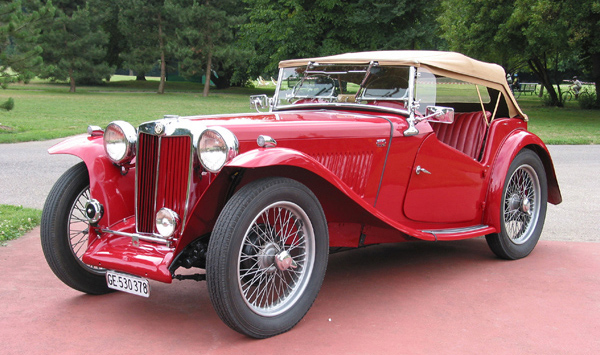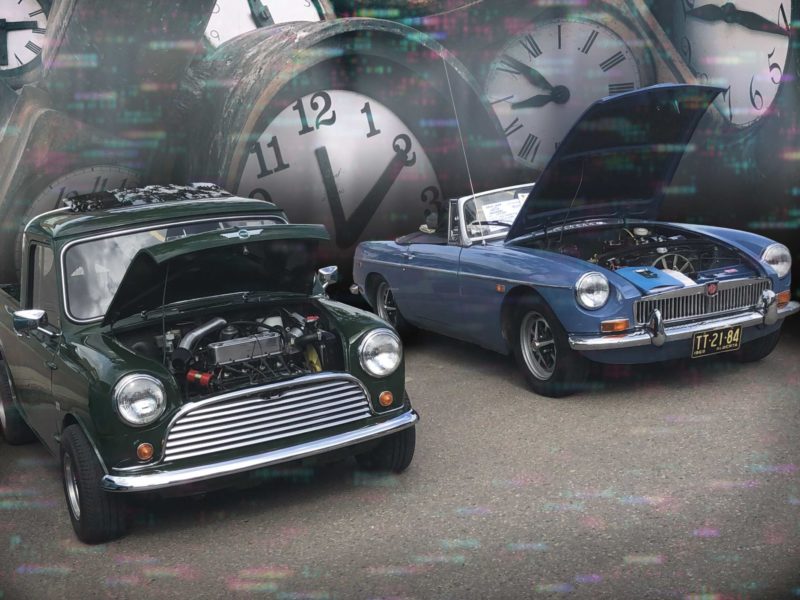
The Model T was once a sought after collector car
What do British sports cars have to do with the Ford Model T?
There was a time when the Ford Model T was ubiquitous in the classic car firmament. Almost every car collector had one at some point and it was both an entry level and aspirational car for many enthusiasts. They represented a good investment as prices rose – albeit gradually – over time and that appreciation ensured that most of the money spent on their maintenance and improvement was likely to be recouped when the cars were sold down the road.
Over the succeeding decades, however, the Model T was eventually replaced as an object of affection by its successor, the Model A, which in turn handed over the baton to a legion of muscle cars and 55-57 Chevys. Sports car enthusiasts gravitated towards European models that built on the sterling reputations won through competition victories and an enamored following in the automotive press.
What happened? The Model T suffered by being seen as something of an anachronism to collectors that were used to post-war era automobiles that could be used on weekend drives, afternoon trips to the local Dairy Queen and used on events from the local club outing to the high dollar tours like the California Mille and Colorado Grand. The T also fell out of favor once its owners grew older and used their cars less thus failing to bring them to the attention of a new generation of potential owners and fans. 

Model T prices courtesy of Hagerty Insurance.
Model T values are almost at exactly the same place they were a decade ago and the long term prospectus for growth is for flat appreciation or even a gradual decline. Does value matter? Maybe and maybe not, but owners are far less likely to lavish time and money on their cars if there is little to no likelihood that the money spent will ever be recovered. More importantly, values reflect demand (read interest) and these flaccid sales are reflective of a market that has passed the cars by.
What the hell does any of this have to do with those of us that love British sports cars? Over the past year or so, as I have attempted to bang the drum for some of the under appreciated models out there such as the TR7, Spitfire, Midget and rubber bumper MGB, there have been repeated comments from the hobby that these cars are, at best, the bottom of the collector’s barrel, and, at worst, outright turds that should be avoided at all cost. What these people fail to understand is that these cars are the gateway drug to other British sports cars. Today’s TR7 owner is tomorrow’s TR3 buyer and the rubber bumper MGB will introduce a world of driving pleasure that cannot help but lead to one day buying an MGA or Big Healey down the road.

Is the MG TC the next Model T?
Any British sports car on the road is advertising for future generations. There was a time when a drive in my TR4 meant at least one or two comments from passers by as to what type of MG it was. Now, few remember MG, let alone Invicta, Riley, Marcos, TVR, et al. How many times have you been out and had to answer the question, what is it? Few owners of SWB Porsche 911s, BMW 2002s and Alfa Romeo Spiders have to endure the ignominy of explaining that Britain once produced more sports cars than anywhere else and that they were widely coveted and collected.
Surely, drivability – or lack of it – played a part in the demise of the Model T. Truth be told, it is just too damn slow to be used on any freeway and it’s usage is best suited for parades and participation in the Great Race. Such concerns have put a damper on TC values and argue for the presence of an operable overdrive in any prospective purchase.
What can you do? Continue to go out and drive, go to as many shows and events as you can and be patient to the general public when explaining what these cars are and what they used to represent. Get your kids involved and try to teach them as much as you can. I spent a few days last month with a collector in Texas who had a great assortment of Big Healeys, Sprites, Triumphs and MGs. His problem was that his 21 year old son had no interest in these relics and instead wanted a Mitsubishi 3000 GT instead. Perhaps that’s not so unusual but it doesn’t speak well of the further if no one will want these cars after we’re gone. After all, we can’t take them with us.








'A Cautionary Tale – British Sports Cars and the Model T' have 2 comments
August 12, 2014 @ 6:03 pm Steve Tom
Sad, but true. I still use my TC as a daily driver, and I drive my Model A Ford regularly as well. I have a friend who uses his Model T for ordinary grocery runs etc. We’re in the minority, though. There are a number of reasons for the decline in the daily use of old cars. Their speed and braking ability make many of them unsuitable for Interstate driving, and more and more secondary roads discourage drivers of old cars because of heavy traffic, unexpected stops, and a complete lack of places to pull off if you break down. Some antique car owners restore their cars to the point where they become an object of worship, something they’re reluctant to pull out of the garage for anything other than a car show or a club tour. Insurance companies also discourage the casual use of antique cars, as the terms of antique policies often prohibit driving the car to work, to the grocery, or on any other trip not directly associated with an antique car event.
There is hope, however. My daughter owns a 1971 MGB which is her primary (and only) transportation. My son begs to drive my Model A and my TC whenever he can find an excuse, and he recently bought an MGA. My youngest daughter has made it abundantly clear that she wants to drive my Jag when she gets her license. (Dream on. I might let her drive my MGB, after she gets an abundance of experience in the family sedan.) The common thread is, of course, they grew up with these cars. They don’t see them as quaint relics of a bygone era, or mysterious machines that they’ve never seen before. They see them as cars that are fun to drive every day.
I agree with the author. Drive your cars. They never fail to generate smiles and thumbs up from other drivers. More importantly, they attract the interest of a younger generation. A generation which I hope will be driving my cars long after I’ve retired my driving cap.
October 19, 2014 @ 6:23 pm steve
I started with a 64 spitfire in 1967 and have had at current count 310 cars and bikes . My daughter started on MGs at 3 she has had 3 MGBs her 2 boys age 5 and 2 are learning the MGB biz. If you let put their hands on the cars they will learn and have fun doing it.